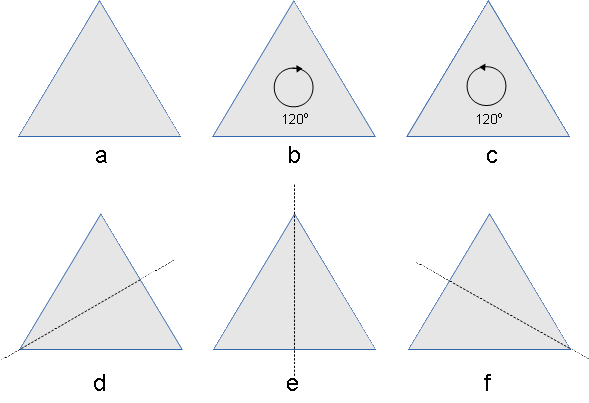(related to Chapter: Groups (Overview))
Before we dive deeper into the group theory, let us take a break from introducing new theoretical concepts. Instead, let us take a closer look at the algebraic structure in a group. If you are new to group theory but are familiar with arithmetics, you will recognize some parallels between the calculations which are possible in a group and calculations which are possible in a number system, for instance, the integers together with the addition $(\mathbb Z, + ).$ This is not a coincidence since number systems are groups.
We want to demonstrate this by the exampe of the number system of integers:
These are exactly the properties required in a group. Therefore, $(\mathbb Z, + )$ is a group. It is even a commutative group, since the addition of integers is commutative. So far, so good. But if you are new to group theory, you will have to become aware of something else. Groups are algebraic structures, which can be arbitrary mathematical objects, not only numbers. In the general sense, groups might occur in sets which have nothing to do with numbers. The surprising fact is that also in these groups we can "calculate" with their elements as if they were numbers.
As an example, consider the set \(S,\ast\) of symmetries of an equilateral triangle, shown in the following figure:

We can combine any of the six elements in an operation table of the group $(S,\ast)$ and you are invited to complete the table as an exercise:
$$\begin{array}{c|cccccc} \ast&a&b&c&d&e&f\\ \hline a&a&b&c&d&e&f\\ b&b&c&a&\text{(exercise)}&\text{(exercise)}&\text{(exercise)}\\ c&c&a&b&\text{(exercise)}&\text{(exercise)}&\text{(exercise)}\\ d&d&\text{(exercise)}&\text{(exercise)}&a&\text{(exercise)}&\text{(exercise)}\\ e&e&\text{(exercise)}&\text{(exercise)}&\text{(exercise)}&a&\text{(exercise)}\\ f&f&\text{(exercise)}&\text{(exercise)}&\text{(exercise)}&\text{(exercise)}&a\\ \end{array}$$
This example demonstrates that in groups we can "calculate" with elements exactly like we are used to in adding integers. In this sense, groups are a generalization of numbers.
Explanations: 1